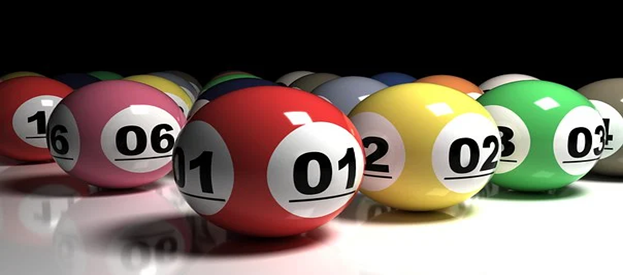1. Introduction to Table Position in Poker
When it comes to the game of poker, understanding and utilizing table position is a fundamental aspect that can greatly impact your strategy and overall success. Table position refers to the seat you are sitting in relative to the dealer button, and it plays a crucial role in the decisions you make throughout each hand. This article will delve into the importance of table position in poker and how it influences your gameplay. By exploring the strategies and adjustments specific to each position, you will gain valuable insights on how to maximize your advantages, exploit your opponents, and ultimately improve your poker game.
1. Introduction to Table Position in Poker
Understanding the concept of table position
In the world of poker, table position is like the real estate market: it’s all about location, location, location. Your position at the table can have a significant impact on the decisions you make and the strategies you employ during a hand. But what exactly is table position? Simply put, it refers to your position in relation to the dealer button, which determines the order in which players act during each betting round.
The impact of table position on decision-making
Table position is more than just a matter of convenience; it can greatly influence the way you play your hands. Generally, the later your position, the more information you have about your opponents’ actions before making your own decisions. This allows you to make more informed choices, as you can gauge the strength of their hands based on their betting patterns. Conversely, being in an early position means you have less information to work with, making it more challenging to make optimal decisions.
2. The Importance of Early Position
Definition and characteristics of early position
Early position refers to the players who act first in a betting round, usually seated to the left of the big blind. Being in this position can be tricky because you have little knowledge about the hands of other players. It’s like being the first one to jump into a swimming pool without knowing if the water is freezing or warm.
Playing a tight and cautious strategy in early position
Given the lack of information, it is generally recommended to adopt a tight and cautious strategy when playing from an early position. This means playing only premium hands that have a higher likelihood of being strong. You want to avoid getting involved in marginal hands that could put you at a disadvantage when facing a stronger hand from a later-position player.
Key considerations for early position play
When playing from an early position, it’s crucial to consider the strength of your hand, the actions of players in later positions, and the size of the blinds. Since you have limited information, you need to be extra cautious and avoid getting drawn into potentially costly situations. Keep in mind that playing from an early position requires discipline and patience, as you may need to fold hands that might have been playable in later positions.
3. Strategies for Middle Position
Defining middle position and its advantages
Middle position, also known as the hijack, refers to the players seated between the early and late positions. This position provides some advantages as you have more information to work with compared to early position players. You can observe the actions of both early and late position players before making your move.
Balancing aggression and caution in middle position
When playing from middle position, it’s important to strike a balance between aggression and caution. You can open up your range of playable hands slightly compared to early position but still need to exercise caution since you have players acting after you. Being selective about your starting hands and considering the players in early and late positions will help you make more informed decisions.
Adjusting to early and late position actions
In middle position, you need to be mindful of the actions of both early and late position players. If early position players have shown strength, it might be wise to fold weaker hands. On the other hand, if late position players have shown weakness, you might consider taking advantage of their position and making a well-timed bluff or playing more aggressively.
4. Advantages and Challenges of Late Position
Exploring the advantages of late position
Ah, the sweet spot at the poker table – late position. When you’re seated near or on the dealer button, you have a distinct advantage over your opponents. You get to act last in the betting rounds, allowing you to gather valuable information before making your move. It’s like having a crystal ball that lets you peek into the hands of your opponents.
Exploiting positional leverage with late position play
Late position play allows you to exploit positional leverage, which means you can control the pot size and manipulate your opponents’ actions. By acting last, you can make more accurate assessments of your opponents’ hand strength and adjust your betting accordingly. This puts pressure on your opponents, making it harder for them to make informed decisions without revealing too much about their hands.
Dealing with potential challenges in late position
While late position offers many advantages, it’s not all rainbows and unicorns. You still need to be wary of the blinds and the possibility of aggressive play from players in earlier positions. Additionally, if you’re not paying attention, other players might pick up on your late position advantage and try to exploit your position by re-raising or playing more aggressively against you. Stay sharp and don’t get too comfortable just because you’re in a favorable position.
Remember, understanding and utilizing table position is an essential aspect of developing a winning poker strategy. Whether you find yourself in an early, middle, or late position, knowing how to adjust your gameplay accordingly will greatly enhance your chances of success at the table.
5. Adjusting your Poker Strategy for Different Positions
Understanding the need for position-specific adjustments
In poker, position is everything. Your position at the table determines the order in which you act and can greatly impact your decision-making. Recognizing the importance of position-specific adjustments is crucial to improving your overall strategy.
Modifying starting hand requirements based on position
The strength of your starting hand can vary depending on your position. When in early position, it’s wise to play more cautiously and stick to premium hands like pocket pairs and high-suited connectors. As you move to later positions, you can widen your range and start playing more speculative hands.
Adapting bet sizing and playing style according to position
Your position also affects your bet sizing and playing style. Generally, when in a later position, you have more information about your opponents’ actions, allowing you to make better-informed bets. In earlier positions, it’s important to be more conservative with your bets, especially if you haven’t seen what your opponents will do.
6. Exploiting Positional Advantage in Poker
Capitalizing on information advantage in later positions
Being in a later position provides you with valuable information about your opponents’ actions before you have to make a decision. Use this advantage to gather insights into their hands and adjust your strategy accordingly. For example, if everyone checks to you, it may be a good opportunity to bluff or steal the pot.
Implementing positional bluffs and steals
One of the key benefits of having a better position than your opponents is the ability to execute positional bluffs and steals. By leveraging your position, you can aggressively bet when it’s unlikely your opponents have a strong hand. This can force them to fold and allow you to take down the pot without having to show your cards.
Utilizing positional advantage in post-flop decision-making
Positional advantage doesn’t end once the community cards are on the table. If you’re in a later position, you have more control over the pot size and can apply pressure on your opponents with well-timed bets or raises. Pay attention to their actions and use your position strategically to make better post-flop decisions.
7. Common Mistakes to Avoid Based on Table Position
Recognizing and avoiding early position traps
In early positions, you have the disadvantage of acting first, which means you have less information about your opponents’ hands. Avoid the temptation to play marginal hands or get involved in big pots unless you have a strong hand. Falling into early position traps can lead to costly mistakes.
Overplaying hands in weak positions
Weak positions, such as being in the blinds or sitting in the earliest positions, require extra caution. Don’t fall into the trap of overplaying mediocre hands or chasing unlikely draws. It’s better to fold and wait for a better spot in later positions where you have more control and information.
Neglecting positional considerations in multi-way pots
In multi-way pots, position becomes even more crucial. Avoid neglecting positional considerations and blindly calling bets from early positions with weak hands. Being out of position against multiple opponents can put you in tough spots and make it harder to make profitable decisions.
8. Maximizing Profits with Effective Positional Play
Developing a solid positional strategy for long-term profitability
To maximize your profits in poker, developing a solid positional strategy is essential. Evaluate your own playing style and the tendencies of your opponents to create a strategy that utilizes your position effectively. Continuously refine and adapt your positional strategy for long-term profitability.
Capitalizing on opponent’s positional weaknesses
Pay attention to how your opponents play their hands based on their position. Exploit their positional weaknesses by making well-timed moves and capitalizing on their mistakes. If they consistently play weakly from the blinds, for example, you can increase your aggression when in late position to steal their blinds.
Analyzing hand histories to refine positional decision-making
A powerful tool for improving your positional play is analyzing hand histories. Look for patterns and tendencies in your own and your opponents’ actions in different positions. This analysis will help you identify areas for improvement and refine your positional decision-making over time. Remember, poker is a constant learning process, and analyzing hand histories can be invaluable for your development.
In conclusion, table position is a critical factor that should never be overlooked in the game of poker. Whether you find yourself in early, middle, or late position, understanding how to adapt your strategy based on your seating can significantly enhance your chances of success. By making position-specific adjustments, capitalizing on positional advantages, and avoiding common mistakes, you can become a more formidable player at the poker table. So, next time you sit down to play, remember the power of playing your position wisely and watch as your poker game reaches new heights.
FAQ
1. Does table position really make a difference in poker?
Absolutely. Table position is a crucial factor in poker as it determines the order in which players act and make decisions. Being in a later position provides you with more information about your opponents’ actions, allowing you to make more informed decisions and potentially exploit their weaknesses.
2. What is the best position to be in at the poker table?
Generally, the later positions (such as the cutoff and the button) are considered the most advantageous in poker. This is because players in these positions have the opportunity to act last in each betting round, giving them more control over the hand and the ability to gather valuable information before making their decisions.
3. How should my strategy differ in early, middle, and late position?
Your strategy should vary based on your table position. In early position, it is advisable to play more cautiously and tighten your starting hand range due to the potential disadvantage of having to act first. In middle position, you can open up your range slightly and look to capitalize on the information from the players in early position. In late position, you can be more aggressive, steal blinds, and exploit your opponents’ weaknesses with a wider range of hands.
4. Are there any common mistakes to avoid based on table position?
Absolutely. One common mistake is overplaying hands in early position, where the risk of facing strong hands from later positions is higher. Another mistake is neglecting positional considerations in multi-way pots, where being out of position can put you at a significant disadvantage. It’s crucial to be aware of these pitfalls and adjust your strategy accordingly to avoid unnecessary losses.






Facebook Comments